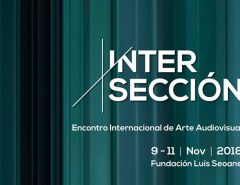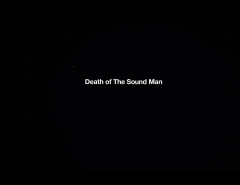Quantum Cinema
Nicholas Rombes, editor del muy recomendable blog Digital Poetics, reflexiona en este post en torno a las múltiples representaciones de la realidad, los universos paralelos y el espacio cinemático que el llamado cine avant-garde o experimental viene desarrollando desde hace tiempo y en ultima instancia desde las incipientes propuestas posibilitadas por los avances en video digital. Todo ello al hilo de un artículo aparecido en el NY Times, referido a su vez a otro publicado en 1935 por Albert Einstein, Boris Podolsky y Nathan Rosen, de título «Can Quantum-Mechanical Description of Physical Reality Be Considered Complete?». Reproducimos un fragmento…
[…] If recent science has demonstrated that what we call reality behaves in a much stranger, unpredictable, and counter-intuitive manner than commonly accepted, then why shouldn’t cinematic representations of that reality behave just as strangely? And if the deeper we look at reality, the more our everyday sense of reality is disproven, then aren’t films that are less realistic actually more real than realistic films? (Mary Ann Doane, in her excellent book The Emergence of Cinematic Time, explores this from a different angle.)
In the future, perhaps, we will look back at avant-garde and experimental cinema as our greatest sources of twentieth-century realism. The radical montage of Eisenstein; the frenetic kino-eye of Vertov; the surreal dreamscapes of Deren; the jump-cuts of the French New Wave: these will be the expressions that corresponded most closely with the principles of reality.
But even the most genre-based movies can dissect reality in startlingly beautiful ways. In Ridley Scott’s 1979 film Alien, for instance, we see John Hurt as he awakens from his space-journey slumber. As he sits up, there is a dissolve that takes us to another shot of the same action from another point of view. For a few moments, the superimposition shows the same event occurring from two separate points of view.
Unlike split or multiple screens, which can also capture the same event from different points of view, this method overlaps the action onto itself. For a few moments, we see two different versions of the same action unfolding simultaneously. This is not a dissolve to another place or time, but rather a dissolve to the same place and time.
The physicist Max Tegmark began his essay «Parallel Universes» with the question, «Is there another copy of you reading this article, deciding to put it aside without finishing this sentence while you are reading on?» For years, this was a question we would assign to science fiction, or the outer limits of «spooky» science.
Recent films like Russian Ark, Time Code, Memento, Primer, November, Mulholland Drive, and others only hint at the reality that lies just beneath our fingertips. Today, as science reveals and verifies that our stable, coherent, and certain reality is in fact nothing more than a perspective, a way of choosing to see the world, it will be up to writers, to philosophers, to film and video makers, to artists, to join the physicists and mathematicians in a deeper rendering of a world whose everyday design puts to shame our most perplexing experimental creations.
Advances in digital cinema and video might very well make possible modes for aesthetically rendering and making stories out of the strangeness of reality, as Lev Manovich’s Soft Cinema project and Adrian Miles’s rhizome video templates have already begun to do. For one day soon, when the physicists’ descriptions of physical reality trickle down into everyday discourse, today’s «avant garde» or «experimental» cinema will be considered soundly and properly realist.





Leave a Reply
Lo siento, debes estar conectado para publicar un comentario.